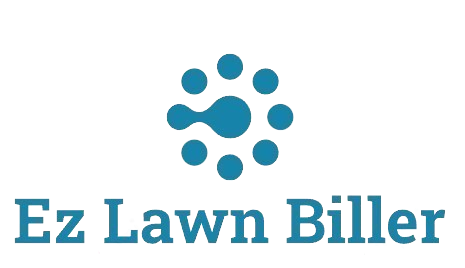The Ultimate Guide to Optimize Routes for Lawn Services
Optimizing routes for lawn services is crucial for enhancing operational efficiency, reducing fuel costs, and improving customer satisfaction. In this comprehensive guide, we will dive deep into effective strategies, tools, and techniques for optimizing routes in your lawn care business. Whether you’re a small landscaping team or a larger service company, understanding how to streamline your routes can significantly impact your bottom line.
In today’s competitive lawn care industry, effective route optimization can be a game-changer. Not only does it save time and money, but it also enhances service delivery, ensuring that customers receive timely and reliable lawn care. In this blog post, we will explore various aspects of route optimization, including the role of technology, best practices, and real-world examples of successful implementation.
By the end of this article, you will have a comprehensive understanding of how to enhance your lawn service operations through strategic route planning, making your business more efficient and customer-friendly.
Understanding the Importance of Route Optimization
Route optimization is not just about getting from point A to point B. It involves a careful analysis of various factors such as traffic patterns, job locations, and service requirements. According to a study by the American Transportation Research Institute, inefficient route planning can lead to up to 30% of operational costs in the transportation industry.
For lawn care businesses, this means that inefficient routing can translate into wasted fuel, time, and resources. It can also impact customer satisfaction if services are delayed or not completed as scheduled. By optimizing routes, lawn service providers can enhance their efficiency, reduce costs, and improve service delivery.
Utilizing Technology for Route Optimization
In the modern age, leveraging technology is key to optimizing routes effectively. Different tools and software are available that can help lawn care businesses streamline their routing processes. For instance, using dedicated lawn service software can enable you to input customer addresses, service frequency, and other relevant data to generate the most efficient routes.
Many lawn service apps also offer real-time traffic updates and GPS tracking, allowing businesses to adjust their routes dynamically based on current conditions. This means that if there’s an unexpected traffic jam, you can reroute your team to save time and ensure they reach their next appointment as scheduled.
Investing in a lawn billing software, such as EZ Lawn Biller, can integrate billing and routing information, making it easier to manage both aspects of your business simultaneously. This integration can improve accuracy, reduce administrative work, and ultimately lead to better customer satisfaction.
Best Practices for Effective Route Planning
When it comes to route optimization, several best practices can help lawn service providers achieve better results. Firstly, consider grouping jobs by geographical location. This minimizes travel time between jobs and allows your team to focus on specific areas during a particular day.
Another practice is to schedule jobs based on service time. For instance, if certain services take longer, plan those during less busy hours to maximize productivity. Additionally, it’s essential to keep communication open with your team to address any unexpected changes or challenges that may arise.
Utilizing a lawn service computer program can also provide analytical feedback on your routing efficiency. By reviewing this data regularly, you can identify patterns, adjust your strategy, and continuously improve your routing process.
Implementing Dynamic Routing
Dynamic routing takes into account real-time factors such as traffic, weather conditions, and last-minute job requests. By implementing this strategy, lawn care providers can optimize their daily routes based on the most current information available.
For instance, if a client requests a last-minute lawn treatment, dynamic routing allows you to assess whether it can fit into the existing schedule without significantly impacting other appointments. This flexibility can enhance customer satisfaction and lead to increased business from repeat clients.
Moreover, tools that support dynamic routing often include features for route optimization, helping to calculate the quickest or most fuel-efficient paths automatically. This technology can be crucial in improving your overall operational efficiency.
Measuring the Success of Your Route Optimization Efforts
To ensure that your route optimization efforts are successful, it’s vital to track performance metrics. Key Performance Indicators (KPIs) can include fuel consumption, time spent on each job, and overall customer satisfaction ratings. By measuring these metrics regularly, you can assess whether your routing strategies are delivering the desired results.
For example, if you notice a significant decrease in fuel costs, it may indicate that your optimized routes are working effectively. Conversely, if customer complaints about missed appointments rise, it may signal a need for further adjustments in routing strategies.
Another important tool for measurement is the use of customer feedback. Gathering insights from clients regarding their service experience can provide valuable data on areas that may require further attention or improvement.
Training Your Team on Route Optimization
Implementing new routing strategies can only be successful if your team is well-trained and informed. Providing training sessions on the importance of route optimization and how to use the tools available is crucial for fostering a culture of efficiency within your lawn care business.
Encourage your team to provide feedback on the routing processes as well. Employees on the ground often have valuable insights into improving service delivery and efficiency. By empowering your team, you can create a more cohesive and effective working environment.
Moreover, consistent training will help your team adapt to any new technologies or routing software you implement. This ensures that everyone is on the same page and working towards the common goal of providing exceptional lawn care services.
Leveraging Data Analytics for Continuous Improvement
Data analytics can play a significant role in enhancing your route optimization strategies. By analyzing patterns in service requests, travel times, and customer preferences, lawn care businesses can develop more effective routing strategies over time.
Using analytics tools, such as those found in comprehensive lawn service software, allows businesses to assess historical data and predict future trends. This predictive capability can help optimize scheduling and routing, leading to better resource allocation and improved operational efficiency.
Furthermore, by continuously reviewing this data, lawn care providers can adapt their strategies to changing market conditions and customer needs, ensuring they remain competitive and client-focused.
Expanding Your Service Area with Optimized Routing
With effective route optimization, lawn care businesses can consider expanding their service areas. The ability to serve a broader geographical area can lead to increased customer acquisition and revenue opportunities. However, it’s important to ensure that your routing remains efficient even with this expansion.
Utilizing a lawn company app that supports multi-route optimization can help in managing a larger service area without compromising efficiency. By strategically planning routes that cover new territories while minimizing travel time, lawn care businesses can grow sustainably.
As you expand, it’s crucial to monitor the impact on your operational costs and customer satisfaction. With proper planning and route optimization, businesses can successfully increase their footprint without sacrificing service quality.
Conclusion
In summary, optimizing routes for lawn services is an essential strategy for improving operational efficiency, reducing costs, and boosting customer satisfaction. By leveraging technology, implementing best practices, and continuously measuring performance, lawn care businesses can streamline their operations and enhance service delivery.
As the lawn care industry becomes increasingly competitive, the importance of effective route optimization will only grow. By adopting these strategies and staying ahead of the curve, lawn service providers can ensure their success in a challenging market.
Ready to take your lawn care business to the next level? Consider utilizing tools like EZ Lawn Biller for streamlined billing and service management. Optimize your routes and deliver exceptional lawn care to your clients today!




